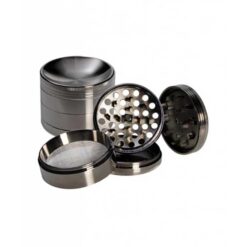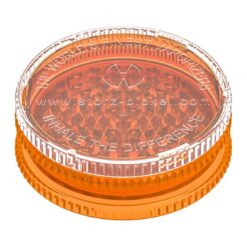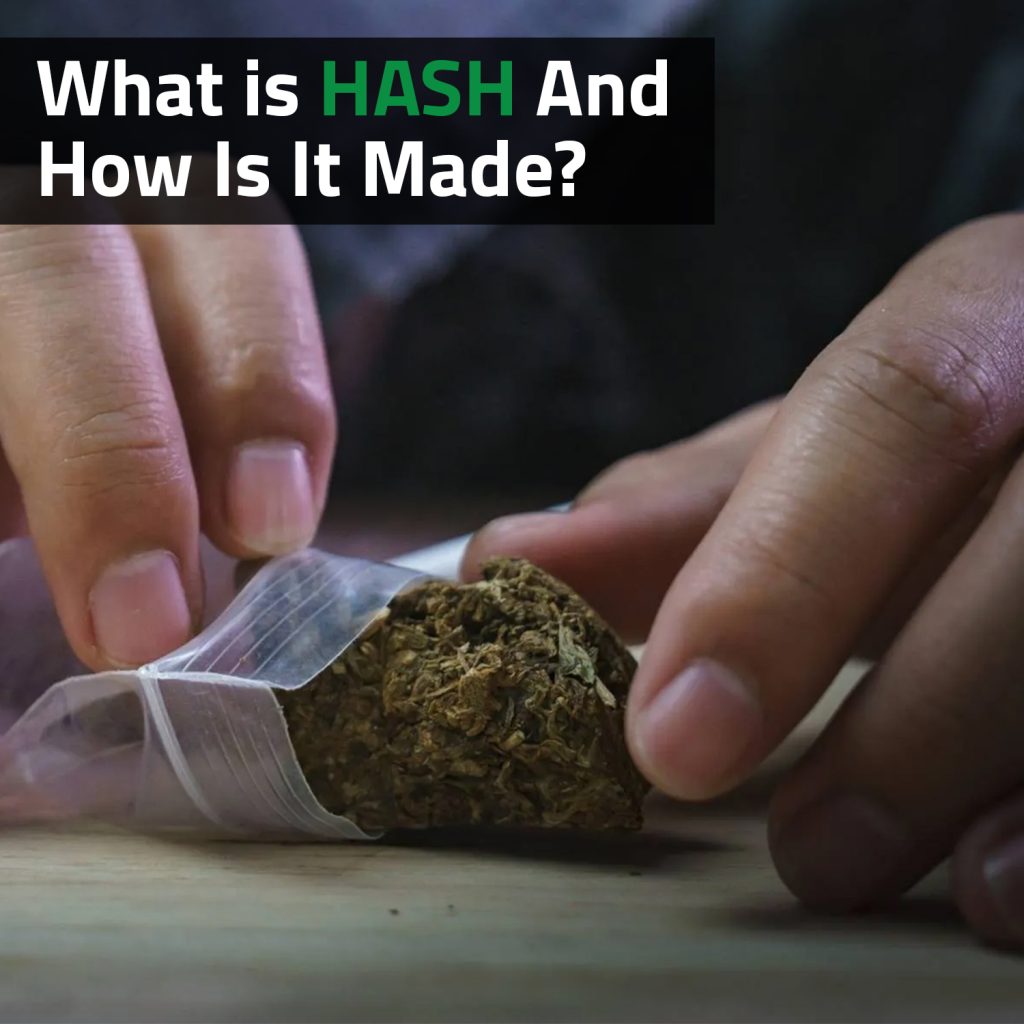Dubbed as the most potent and concentrated form of cannabis, hash or hashish is a substance that is extracted from a cannabis plant. Today you can enjoy a number of cannabis concentrates like cannabis oils, however, in the past the choice was either weed or hash.
So what is hashish? How is it made and what effect does it have when consumed?
What Is Hash?
Hash is simply a cannabis extract made from the trichomes that are found covering the surface of cannabis plants. The trichomes are removed and processed to produce a concentrate (also known as resin). Hash is usually brown or dark green and is rich in THC or CBD and other terpenes, which gives it a distinctive taste. The potency of the hash is dependent on the type of cannabis strain the hash is made from and its genes.
Not to be confused with kief, which is the dry powder of trichomes that is often accumulated in your grinder through a mesh screen or sieve, hash has a more produced, solid consistency that can either be left as a slab of wax (resin) or dried and formed in a brick or ball.
-
DAVINCI IQ2/IQ-C Dosage Grinder
Starting From: R1,125.00 -
Grinder 4-Part Concave
R350.00 -
Santa Cruz Shredder – G Pen 4-pc Hemp Grinder
R425.00 -
Herb Mill
Starting From: R175.50
There are two forms of hash, solid hash and liquid hash. Solid hash is more common as it can easily be compressed and heated to form its structure, while liquid hash has a thick, waxy oil consistency, produced by use of solvents.
How is any of this different, as both weed and hash come from cannabis? Well, the answer lies in the THC/CBD percentage.
The Difference Between Hash and Weed
Cannabis, weed or marijuana is universally known for its flower, or bud, that is cured, dried and consumed through joints, pipes, blunts and bongs. The THC/CBD percentage ranges from a low ten percent to a healthy twenty-four percent, depending on the type of cannabis strain.
Hash is the extract made from a cannabis plant’s trichomes that produce a waxy resinous substance when heated or clay-like sandy texture when dried and compressed. The THC/CBD percentage is significantly higher in hash, with a high dose of thirty to sixty percent in solid hash and ninety percent in hash oil.
Hash has gained a strong support in cannabis users over the years, and some strain groups are bred specifically for hash production. While South African cannabis laws allow for growing and consuming cannabis in a personal capacity, you can make the most of your cannabis plants and flowers with fairly easy techniques to make hash.
How Hash Is Made
The process of making a hash is simple and straightforward with several methods at hand. The trichomes used to make hash is commonly found in mature, unpollinated female cannabis plants. The trichomes are put through an extraction process, dry or wet, to produce the hash easily at home. Liquid hash is professionally made by licensed, experienced technicians, using expensive extraction equipment and solvents to extract high percentages of THC/CBD in hash concentrates.
We would caution you from making liquid hash at home and to rather buy it from a licensed cannabis dispensary where quality control protocols are put into place to ensure no other compounds or contaminants are found in them.
If the plant is dried, hash can be collected by hand by mechanically tapping the plant or submerging it in icy water and then sieved through mesh screens to remove the frozen trichomes, that detached itself from the cannabis plant, and dried and pressed into blocks or balls.
Types Of Hash
There are two types of hashish you can make at home:
- Dry Sift Hash
- Bubble Hash (ice water hash)
Dry Sift Hash is made by rubbing or rolling dried cannabis on a mesh screen. During this process, the dried resin glands (trichomes) pass through the screen and then through finer meshes for a more refined hash.
You can use this resin powder to top bowls or sprinkle it across the joint, however to achieve the end result of the hash, you can press the powder by applying pressure and heat to melt and amalgamate the hash. This will result in a sticky, wax substance that can be wrapped around joints and smoked. You can also compress it without applying heat to form a clay-like texture that can also be applied to joints and pipes.
Bubble Hash, also known as ice water hash, is the process of freezing the trichomes and then filtering it through fine screen bags to extract the hash. This would require you to put the cannabis buds or flowers in ice water and then carefully stirring to remove the trichomes from the flower. Once the resin has been extracted and dried, bubble hash will have a dry/chalky texture or a greasy oil texture.
The process of refinement for bubble Hash is graded on a six-star quality system. Six-star bubble hash is the most refined and rated the highest quality that is known as “full melt” and can be dabbed. One-star bubble hash is the least refined of bubble hash, with a low quality score. This quality of bubble hash is usually pressed and smoked like traditional hash.
The Effect Of Hashish On The Body
Hash is an extremely powerful THC concentrate, a little goes a long way when consuming hash because of the high THC percentages. You will experience the terpenes, euphoria and other cannabis effects of the hash depending on the quality, type of cannabis strain from which the hash is made.
With the various forms of hash, you can add it to your rolled joint or packed pipe/bong for a more intense smoke session, or you can apply the waxy resin to a dab rig and melt it to inhale the THC concentrate. Smoking/dabbing hash only increases the intensity of the high you experience as your body is, essentially, taking in more THC through these methods.
All in all, hash has been around for thousands of years, with many extraction methods used to create the different types of hash. With a higher THC percentage, hash is often seen as add-ons to joints, dab rigs and pipes to elevate the high when consumed.










